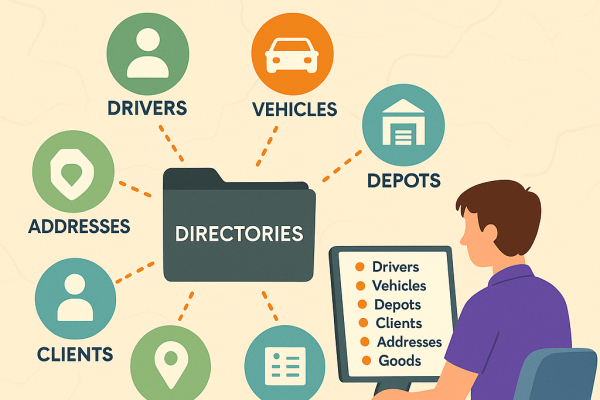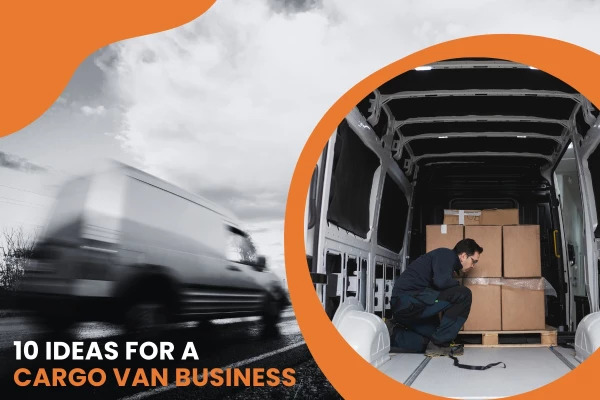The Importance of High-Visibility Clothing for Truck Drivers

by
Nick Warrick
March 30, 2023
Many people think truck drivers are always safe in their cabs, so comfort is the only important aspect of their clothing.
In reality, truck drivers often work in low light conditions and transport materials around other machinery, putting their safety at risk.
Wearing fluorescent or reflective clothing ensures truck drivers are visible regardless of the task they’re completing. Knowing the benefits and types of high-visibility clothing keeps everyone safe on the worksite.
Why truck drivers need high-visibility clothing
Driving a truck is a dangerous job, but wearing high-visibility clothing can make a significant difference in workplace injuries and deaths. Among other things, truck driving encompasses:
- long-haul drives,
- transporting cargo around an active worksite,
- hitching a car to a tow truck,
- delivering packages along busy streets.
Ensuring the driver is visible increases their safety.
Just as a truck has safety elements, like reflectors, spotlights, and lengthy mirror arms, the driver should have similar precautions.
When other drivers and workers can easily spot people coming into their area, they can stop and react in a way that prevents a harmful or fatal accident.
Benefits of high-visibility clothing
High visibility clothing ensures truck drivers are always visible, regardless of the weather or lighting conditions. Anyone driving past the truck drivers can see them, as can workers operating machinery at a delivery location.
Benefits include decreasing accidents while affordably increasing visibility. Issuing high-visibility garments to each employee costs much less than paying out worker’s compensation or insurance settlements due to an accident.
Since truck drivers are more visible due to the fluorescent fabric and reflective strips, the likelihood of an accident decreases.
When all of a company’s truck drivers wear high-visibility clothing, the company promotes a safe, unified front. Any time a truck driver needs to exit their vehicle or make a delivery, they’re easy for other drivers to see.
Residents will also be able to identify the person approaching their home. This method also ensures the company complies with government regulations.
Pro tip: by implementing a digital safety checklist across your delivery fleet, you can make sure all truckers are fully equipped before each route.

OSHA requirements for high-visibility clothing
The Occupational Safety and Health Administration (OSHA), working under the US Department of Labor, requires workers laboring near highways and motorized vehicles to wear high-visibility clothing.
The guidelines specifically mention fluorescent clothing for all workers in the vicinity of motorized vehicles, with the addition of reflective strips for night shift workers.
In fact, OSHA specifies that the reflective material must be “retro-reflective,” meaning it’s either yellow, orange, white, silver, or yellow-green. It should reflect a high percentage of headlight beams to ensure drivers see the workers nearby.
This government entity found that the safety benefits were worth mandating high-visibility clothing for anyone working in this type of location.
Types of high-visibility clothing
There are many high-visibility materials that can be used to make clothing for truck drivers as well as elements to add to existing gear. For example, making vests from fluorescent-colored material ensures they’re visible even in rainy or overcast conditions.
So truck drivers working during the day can sport a fluorescent vest to stand out from their surroundings.
In addition, safety yellow and safety orange are the signature colors for high-visibility clothing, as bright colors grab people’s attention. Furthermore, people associate yellow and orange with warnings in other traffic lights and signs, so they’re ideal choices for high-visibility clothing for truck drivers working on and around roadways.
Adding reflective strips to clothing makes it significantly easier for an approaching vehicle to spot a truck driver, even at night, as their headlights will shine against the material and alert the other driver to the trucker’s location.
Therefore, anyone working in low-light conditions, dreary weather, or at night will want to add reflective strips to their high-visibility clothing.
Combining fluorescent vests with reflective material is the best bet to ensure optimal visibility in all conditions. Headbands and wristbands made of reflective material with flashing LED lights also ensure the truck driver is visible to everyone in the surrounding area.
The types of high-visibility clothing go beyond fluorescent and reflective options. The American National Standards Institute (ANSI) outlines three distinct high-visibility clothing classes.
-
Class 1 ANSI Safety Vest
-
Class 2 ANSI Safety Vest
-
Class 3 ANSI Safety Vest
Class 1 ANSI Safety Vest
Class 1 ANSI safety vests are for people working in environments that pose the least risks. For example, truck drivers delivering in residential areas where traffic speeds are 25 MPH or lower can wear this class of vest.
These vests must be safety yellow or safety orange to ensure they’re bright enough to see in decent lighting. In addition, the vests need at least 155 square inches of reflective tape around the middle and over the shoulders.
Class 2 ANSI Safety Vest
Class 2 ANSI safety vests are larger than Class 1 options because they need to provide more visibility for truck drivers. Anyone transporting, loading, or unloading cargo in areas where traffic may reach 50 MPH needs to wear a Class 2 vest.
These vests must use at least 775 inches of safety yellow or safety orange fabric as the base. It should also have over 200 square inches of reflective strips around the vest.
Class 3 ANSI Safety Vest
Truck drivers who transport, load, and unload cargo in areas where traffic speeds are faster than 50 MPH must wear a Class 3 ANSI safety vest. This vest is also required for tow truck drivers and anyone working during extreme weather that greatly reduces visibility.
These vests require 1,240 inches of safety yellow or safety orange fabric as the base, so instead of a sleeveless vest, they more closely resemble a short-sleeved t-shirt. The garment needs 310 square inches of reflective strips to heighten visibility.
Final notes
High visibility clothing means that truck drivers wear fluorescent and reflective clothing to increase other people’s awareness in any working condition.
Furthermore, knowing what type of vest to wear depending on the environment ensures a company meets government standards and provides a safe workplace for all employees.
About The Author
Nick Warrick
Nick Warrick is the sales manager at All Seasons Uniforms, a professional workwear company based outside of Chicago that has been in business since 1991.






